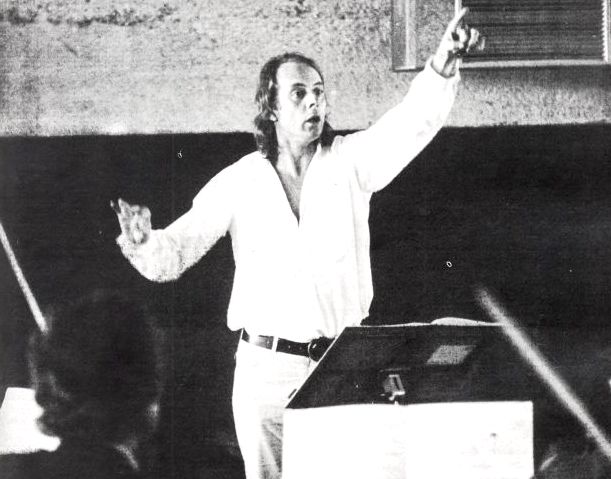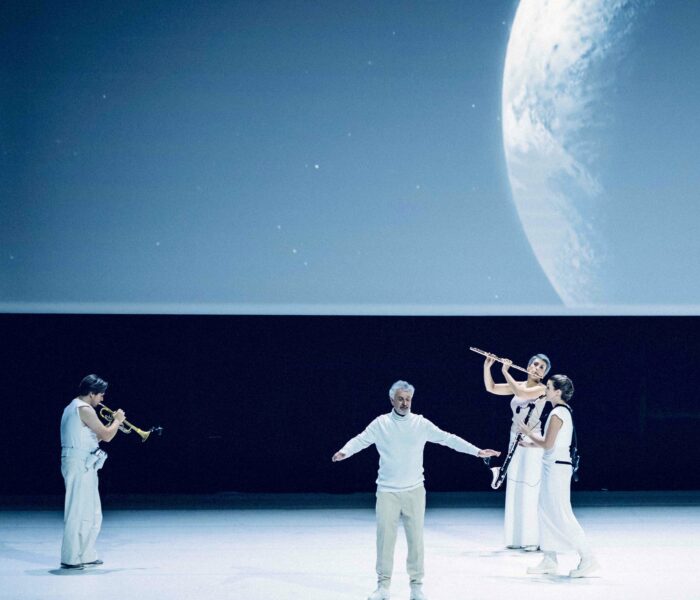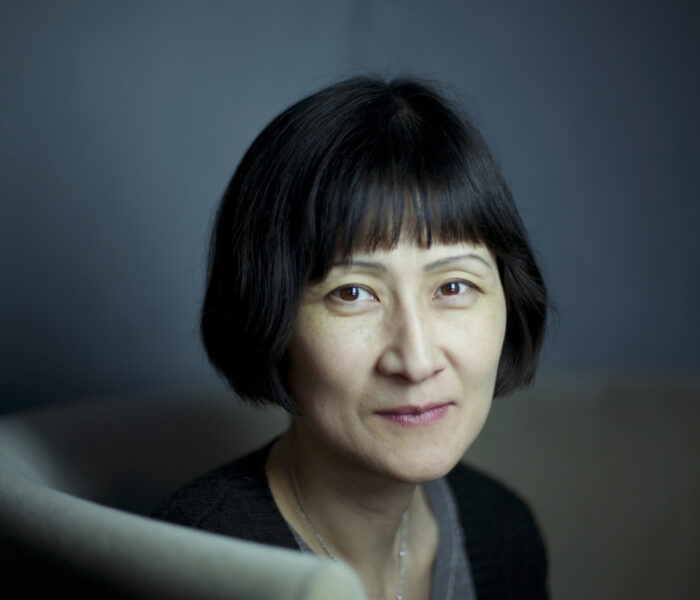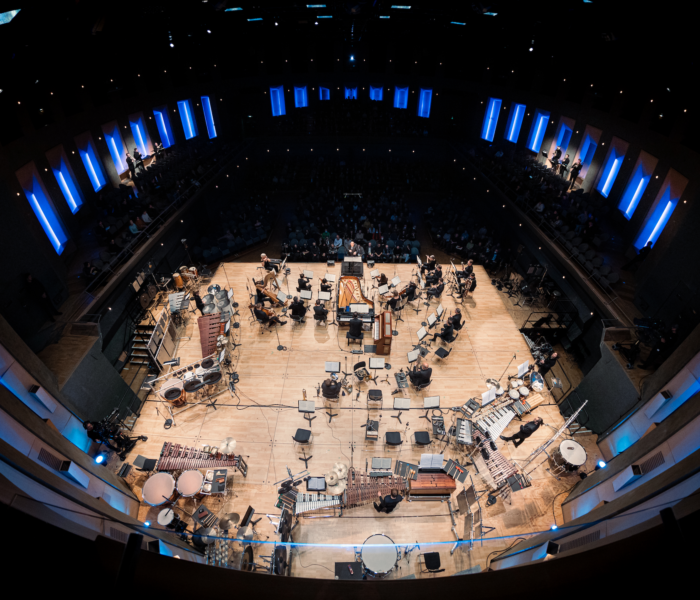Le plasticien et cinéaste Charles de Meaux a réalisé, dans le cadre du 1%, une sculpture sonore permanente pour la Scène de recherche de l’École Normale Supérieure Paris-Saclay. Faire chanter ces oiseaux mis en musique par Messiaen ; leur faire chanter la partition du compositeur sans passer par la médiation des instruments de musique, c’est l’expérience que propose l’artiste. La diffusion immersive spatialisée de cette performance où l’on rend à la nature sa création, en est la trace.
La diffusion de l’œuvre de Charles de Meaux requiert une écriture de la spatialisation – et 42 points de projection sonore – pour transposer les arrangements de la partition et recréer un espace spécifique. Cette pièce plastique, conçue comme un rideau de scène animé a la spécificité de se déclencher avant chaque spectacle. Cette œuvre vient s’inscrire avec une grande pertinence par rapport au contexte, à l’usage même du bâtiment.
Charles, peux-tu revenir sur la genèse de ce projet, de quelle manière ta proposition s’est construite et pourquoi le choix de ce dispositif plus spécifiquement ?
Se trouver face à une architecture de Renzo Piano incite à une certaine humilité… À Saclay, le bâtiment de l’ENS est conçu comme un atrium majestueux comprenant un jardin très contemporain aussi bien dans son esthétique que dans son design très écologique. Et au milieu, il y a un cube sans fenêtre que l’architecte compare un peu au monolithe de 2001 l’Odyssée de l’Espace. Cet édifice est dédié à l’expérimentation des formes contemporaines de spectacles – performances, théâtre, talks – pour et par les étudiants. C’est aussi la partie du campus où je devais intervenir. Je ne voulais rien faire qui « s’accroche » à l’architecture ou lutte contre elle. J’ai eu tout de suite le désir, l’intuition de faire entrer la nature dans cet espace de la Scène de recherche, où on ne l’attend pas, un endroit très fermé, clos. J’ai cherché quelque chose qui fasse sens dans ce lieu. Comme « retourner le gant ».
Comment as-tu occupé cet espace ?
Je suis plasticien et non musicien, donc la question qui m’intéresse, c’est évidemment celle de l’espace, comment occuper un espace ? Pour y répondre, j’ai travaillé la spatialisation pour traiter le son comme une matière physique. C’est aussi la seule façon d’aborder la complexité, l’équation du passage de la partition à la réalité de la nature.
Que représente pour toi Olivier Messiaen, cette figure emblématique de la musique contemporaine du XXe siècle ?
Proposer une œuvre pour un lieu de transmission aussi emblématique que l’ENS m’a poussé à réfléchir à cette question de la transmission et de « la mise en discussion de sa pratique ». Olivier Messiaen par son enseignement, a fédéré – je dirai presque créé – des générations entières de compositeurs comme Karlheinz Stockhausen, Pierre Boulez, ou même Quincy Jones. Aujourd’hui encore, il est une référence pour de nombreux musiciens de toutes les écoles. Tom York de Radiohead, par exemple, le cite régulièrement. J’ai pensé que c’était bien d’inscrire dans cette école, une personnalité qui s’intéressait autant à ce qu’est musique qu’à la façon de jouer d’un instrument.
Comment as-tu construit cette pièce?
La pièce a une certaine humilité par rapport à la création de Messiaen, qui lui-même ressentait de l’humilité par rapport à la nature. C’est justement ce pont là qui m’a inspiré pour avancer. En écoutant sa musique, son Réveil des oiseaux, j’ai le sentiment qu’il vit dans une espèce de syndrome de Stendhal permanent, c’est-à-dire un déferlement émotionnel, face à ces oiseaux et il en tire des notes. Comme les notes ne sont pas mon langage, comment puis-je les rendre à la nature ? J’ai voulu explorer la relation entre la création artistique et la nature, nature entendue non pas comme décor au sens des XVIIe-XVIIIe, mais nature dans la façon dont elle englobe la création.
Le point de départ est la partition bien sûr. Une partition difficile à jouer mais dont les indications de couleurs, de sons, venant de l’ambiance réelle, ont vraiment guidé ce travail. La partition a été légèrement simplifiée, il faut quand même le reconnaître. Cette œuvre de vingt minutes n’a pas été jouée dans son intégralité. Nous en avons choisi un extrait de six minutes : une durée qui correspond de façon pragmatique à celle qu’il faut au spectateur pour entrer dedans sans en être lassé.
De quelle façon as-tu procédé pour l’enregistrement?
Après un long travail ornithologique avec un animalier habitué à travailler avec le cinéma, nous avons fait chanter puis enregistré les oiseaux de la partition un par un. La plus grande difficulté que j’ai rencontrée a été l’évolution du langage des oiseaux. Aujourd’hui on pourrait presque dire que les oiseaux ne parlent plus la même langue qu’à l’époque de Messiaen; une sorte de décalage comme le Français par rapport au Québecois. J’ai d’abord essayé de résoudre cela de façon informatique par des transpositions et des harmonisations. C’était franchement impossible, car cela produisait un effet « Dj », vocoder*…


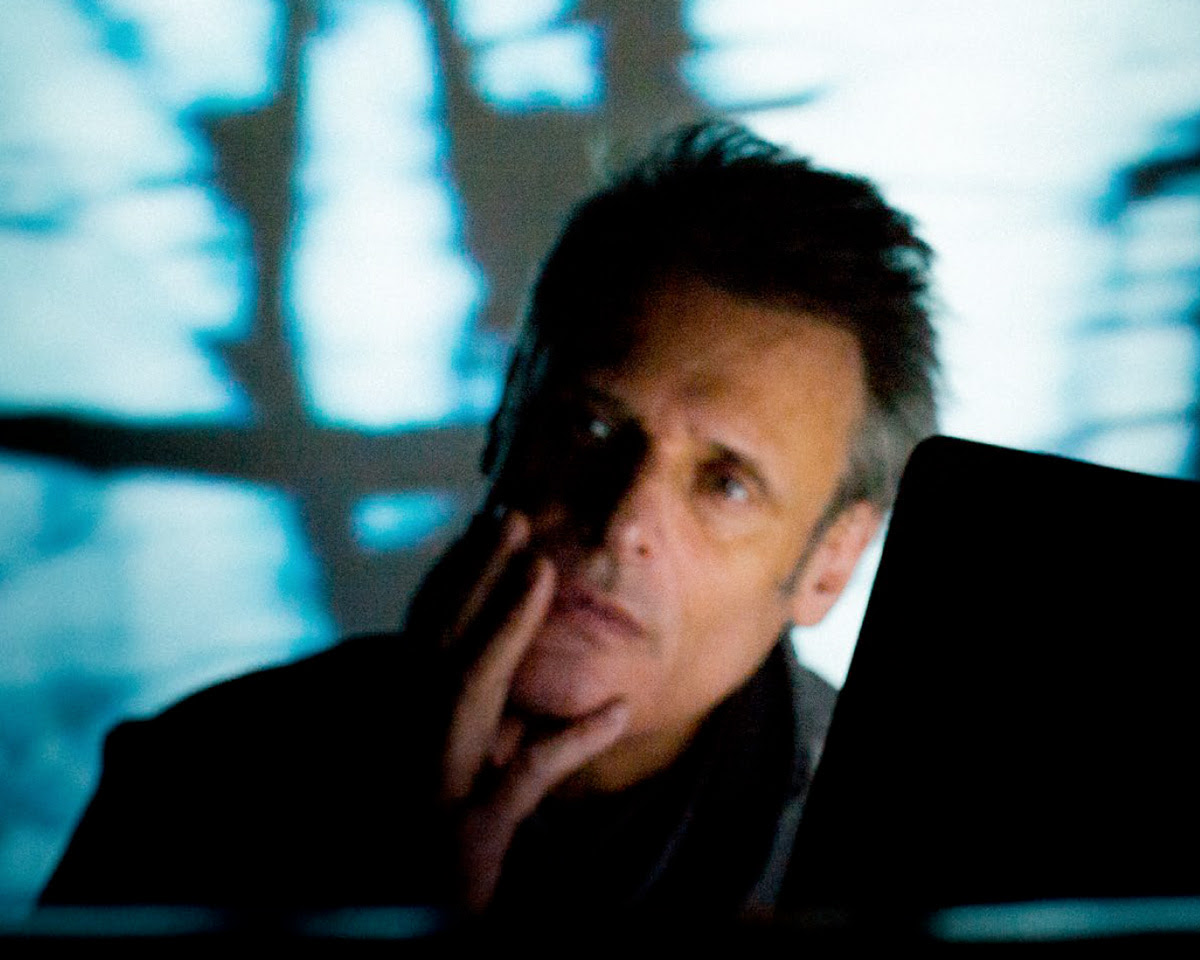
Avec Fabrice Guedy, compositeur et enseignant, nous avons enregistré tous les oiseaux ad lib. Nous avons découpé et assemblé petits phonèmes par petits phonèmes comme un travail de couture pour obtenir le son qui correspond à la note. Ce fût un travail informatique et sonore énorme, un peu comme les montages d’autrefois à partir de bandes magnétiques. Ce qui donne un son tout à fait naturel et permet de « réparer » l’enregistrement original.
Ce qui me plaît, c’est que les spectateurs puissent entrer dans cette pièce et entendre les oiseaux sans savoir de quoi il s’agit. Je voulais éviter de faire une chorale avec des sons faussés!
J’aime l’idée que Messiaen ai écrit ce morceau presque comme on écrirait un film, avec un début et une fin : il commence à 5h du matin, je crois, il fait encore nuit et se termine à midi. Ce sont des oiseaux d’une forêt entre Paris et Lyon. Ils sont très communs, on les connaît tous. Ce qui est beau dans Messiaen encore une fois, c’est cette façon modeste de mettre en scène les oiseaux qu’on connaît tous. Je tiens à respecter cette approche simple à l’opposé d’une spectacularisation. Évidemment, comme le musicien, j’espère que c’est agréable pour les gens, que c’est séduisant, que c’est intéressant, que cela les questionne, mais ce n’est pas un show off.
Quand Messiaen l’a composé en 1953, il l’a écrit comme un musicien, c’est-à-dire avec des lignes mélodiques compliquées, mais aussi avec des arrangements, des motifs qui complexifient la composition. Si on retient toute cette ornementation, ces sonorités ajoutées aboutissent à un brouhaha incompréhensible. Le seul moyen d’éviter le chaos était de travailler tout particulièrement la spatialisation.

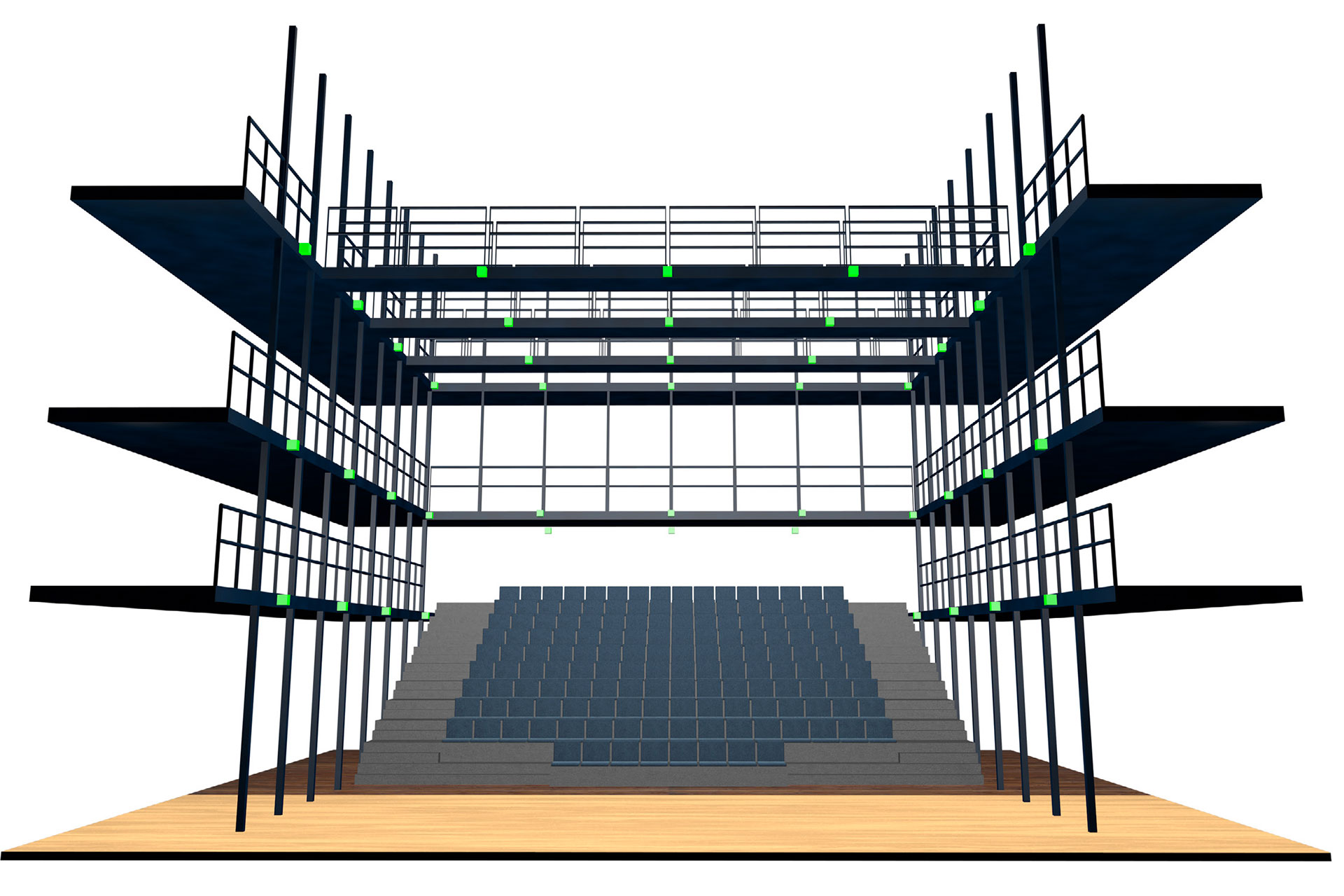

Dans cette sculpture sonore, quel rôle joue l’image par rapport au son?
Elle joue un double rôle. Par rapport au son, l’image permet de positionner physiquement le spectateur en concentrant son attention sur un point fixe. Je voulais surtout éviter de tomber dans le piège publicitaire de la déconnexion de l’image, proposer des images de voitures, alors que ce sont des oiseaux qui chantent. Je ne voulais pas non plus d’images illustrant une belle nature bien filmée. Donc ce que je propose c’est juste une évocation de ce que peut être l’idée d’un milieu naturel que je propose. Une idée du milieu naturel…
Propos recueillis par Anne-Laure Chamboissier
*Le vocoder est un dispositif électronique de traitement du signal sonore.
Photos © Charles de Meaux
Photos © Marc Saget
Photos © Anne-Laure Chamboissier



)
